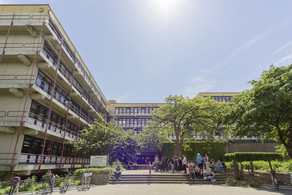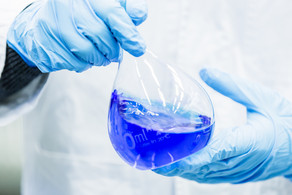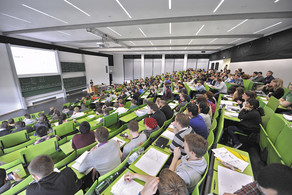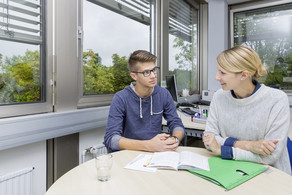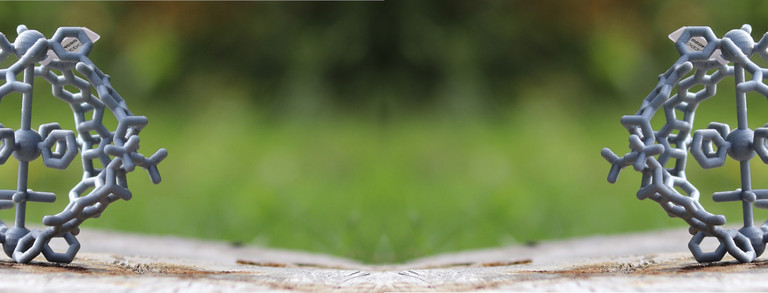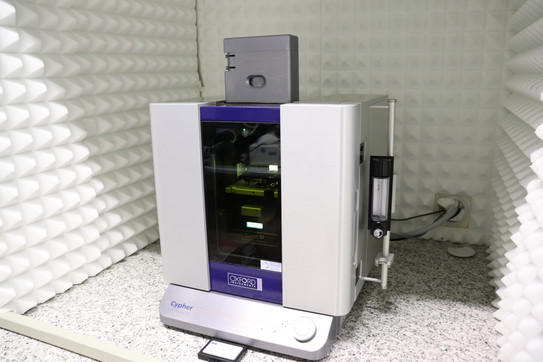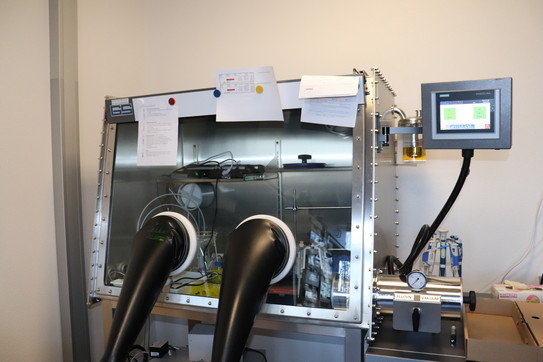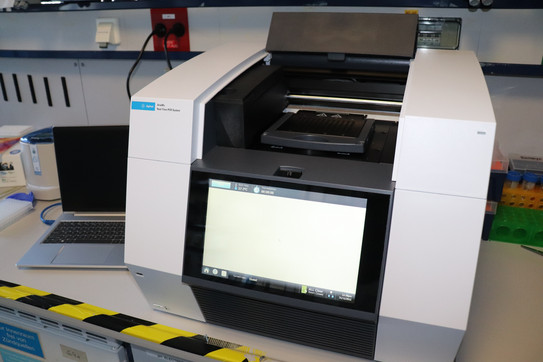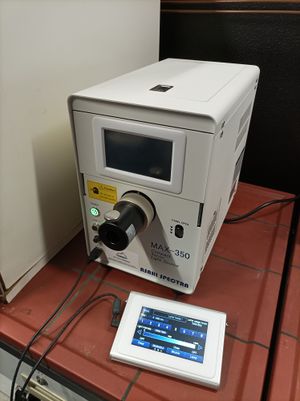Equipment
The Clever Lab is equipped with a range of techniques for multistep organic and inorganic synthesis, compound purification, structure elucidation and analysis of multiple properties. Besides the below listed machines, the Department of Chemistry and Chemical Biology at TU Dortmund University, as well as its embedding in the University Alliance Ruhr, opens possibilities to access an even wider range of spectroscopies, microscopies and other methods such as EPR, time-resolved fs spectroscopy, TEM, AFM and many more in collaboration.
NMR spectrometer
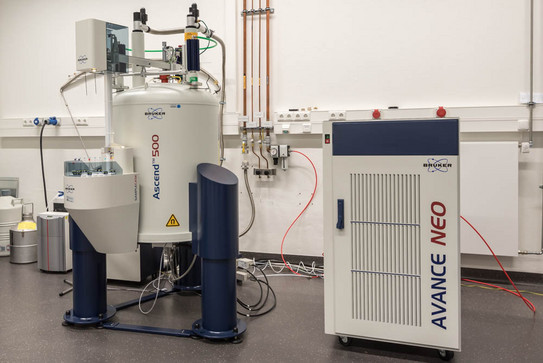
500 MHz Bruker Avance neo NMR spectrometer with different probe heads, temperature control unit and sample changer. A range of further NMR spectrometers up to 700 MHz is available in the department.
Mass spectrometer
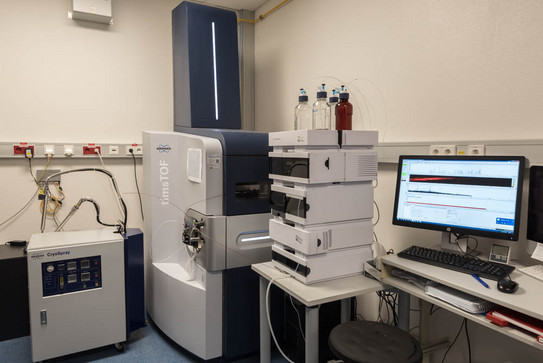
High-resolution Ion Mobility-ESI mass spectrometer Bruker timsTOF with HPLC and syringe pump infusion, glove box connection and cold spray ionization (cryo ESI) source.
This machine is not only suited to obtain the mass/charge ratio of supramolecular analytes with high precision and isotopic pattern resolution, it also delivers a value for the gas phase ion mobility, which can be converted into a collisional cross section (CCS in Å2). CCS values are indicative of an ions size and shape and can be used to distinguish isomers (with same m/z), simplify the analysis of complex mixtures and obtain valuable information about conformational flexibility and structural switching processes. We further use software tools to calculate theoretical CCS values from molecular models or X-ray structures in order to compare them with the experimental values.
The cryo-ESI source allows injection of analytes at much lower temperatures than usually applied in ESI sources, thus enabling the MS detection of very fragile coordination compounds or non-covalent adducts.
Diffractometer
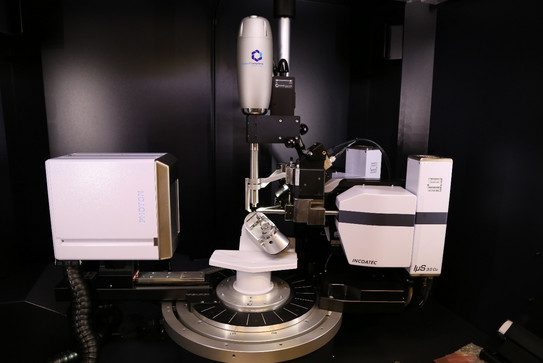
Single crystal X-ray diffractometer (Bruker D8 Venture, with Incoatec Microsources 3.0 Cu and Mo, Photon II detector) for crystal structure elucidations of organic, inorganic, supramolecular and biopolymeric species.
In cases where microscopic crystal sizes, enormous units cells, highly disordered side chains and solvents lead to poor diffraction, we are fully equipped to freeze mounted crystals, kept in standardized pucks, contained in transportable dewars, down to liquid nitrogen temperature and bring them to synchrotron sources such as DESY’s Petra III, P11, beamline in Hamburg to collect diffraction data.
Glovebox and SPS
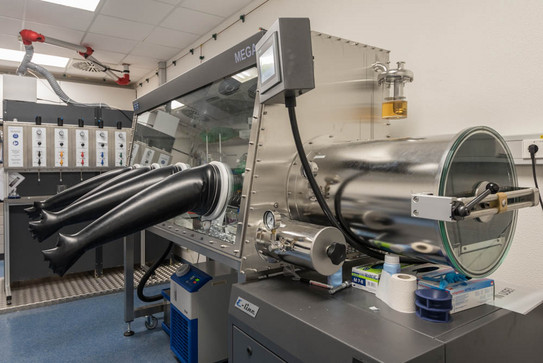
Glovebox, coupled to a solvent purification system (SPS).
The argon-filled containment allows handling highly sensitive substrates, reaction intermediates and supramolecular species without risking exposure to oxygen and moisture. A selection of dry solvents can be withdrawn outside or directly from within the glovebox.
UV-Vis spectrometer
DAD HP-8453 UV-Vis
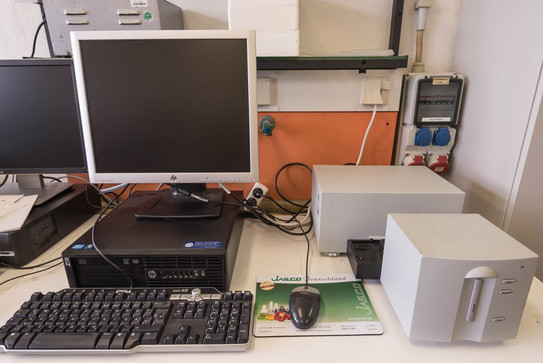
Spectrometer with kinetics software and adapter for Unisoku Coolspek temperature-controlled cuvette holder.
Jasco V-650 and Jasco V-750
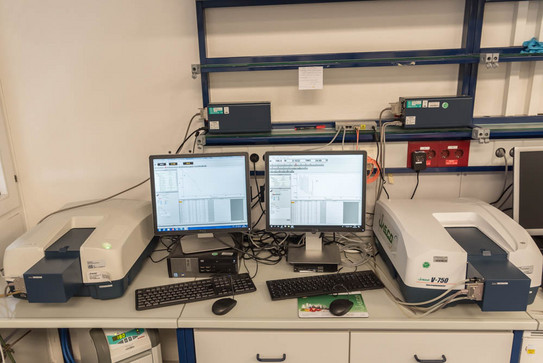
Two temperature controlled UV-Vis spectrometers with 5x cuvette changer for DNA melting curve analysis.
Fluorescence spectrometer
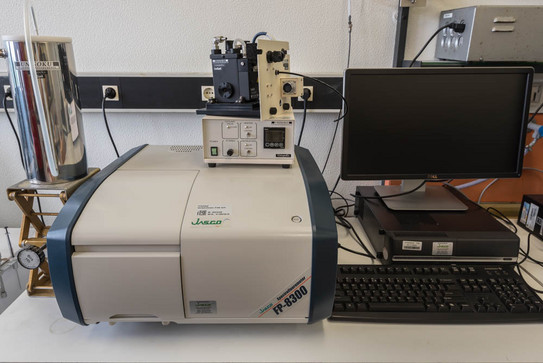
Jasco FP-8300 fluorescence spectrometer with adapter for Unisoku Coolspek temperature-controlled cuvette holder.
CD spectrometer
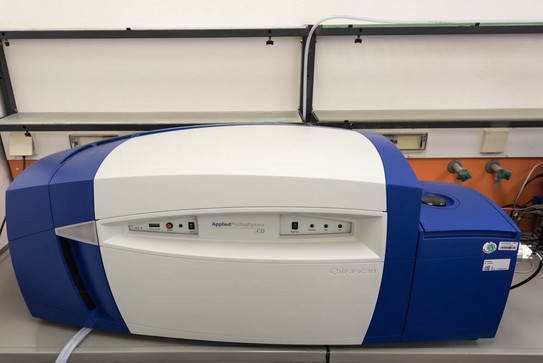
Circular Dichroism (CD) spectrometer (Applied Photophysics qCD Chirascan) with temperature-controlled cuvette holder.
Jasco CPL-300 CPL Spectrometer
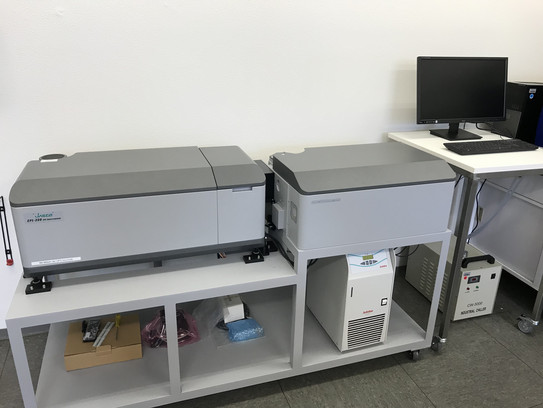
Jasco CPL-300 CPL spectrometer with temperature-controlled cuvette holder. This instrument allows the determination of circularly polarized emission from chiral luminescent compounds and supramolecular aggregates.
Spectro-electrochemistry setup
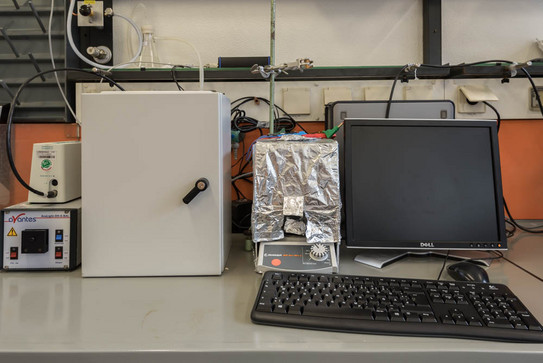
Metrohm Autolab PGSTAT-101 with Avantes light source and DAD UV-Vis spectrometer, various electrodes, reaction cells and cuvettes.
ITC
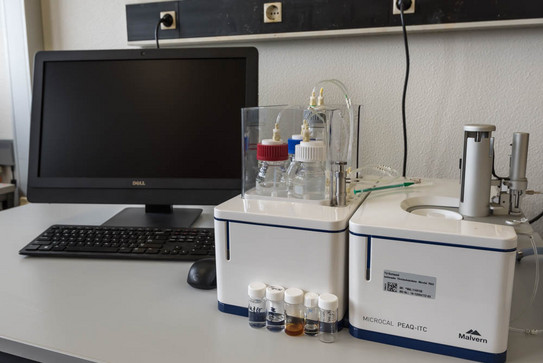
Malvern Microcal Peaq Isothermal Titration Calorimetry (ITC) with Hastelloy cell, washing unit and different software tools for data interpretation.
Melting point apparatus
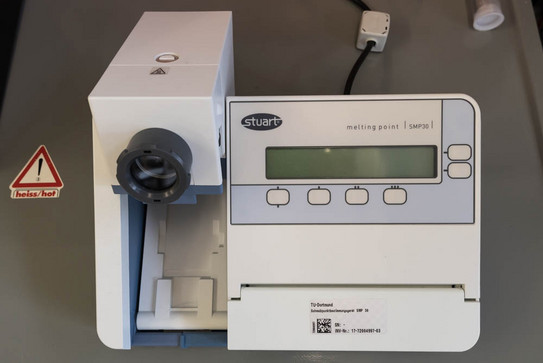
Stuart SMP30
HPLC
Normal Phase HPLC
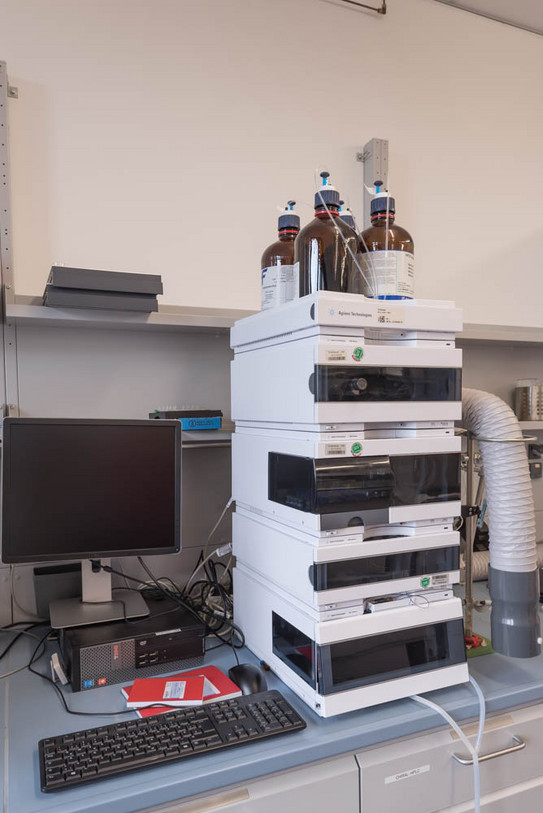
Agilent Technologies 1260 Infinity with autosampler, UV-Vis detector, fraction collector and various columns, including chiral ones for the separation of enantiomers
Two reversed phase HPLC systems
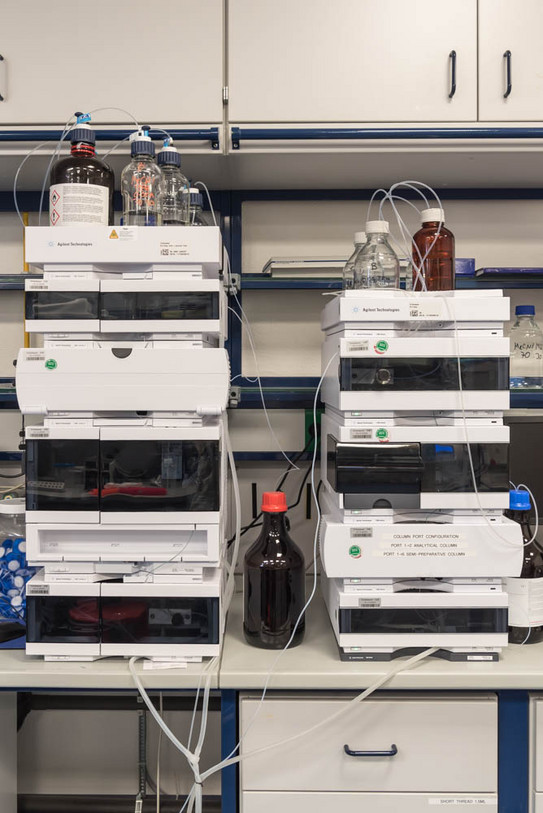
Agilent Technologies 1260 Infinity I/II with autosampler, DAD detector, column oven, for the analysis and purification of DNA strands.
GPC
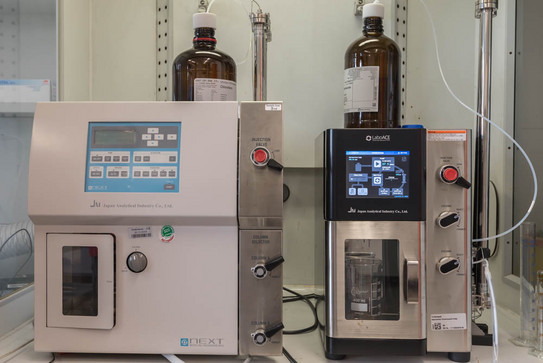
Two preparative recycling gel permeation chromatography systems (GPC, from Japan Analytical Industry) with columns for different organic solvents. GPC purification is usually the last purification step for organic ligands before applying them in metal-mediated self-assembly.
MPLC
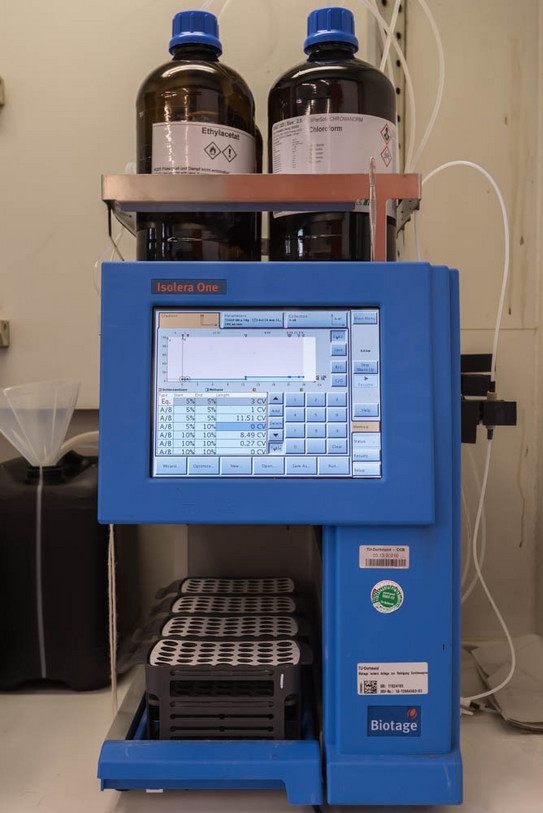
Biotage Isolera One MPLC cartridge purification system with TLC simulating software and automated fraction collector.
Microwave reactor
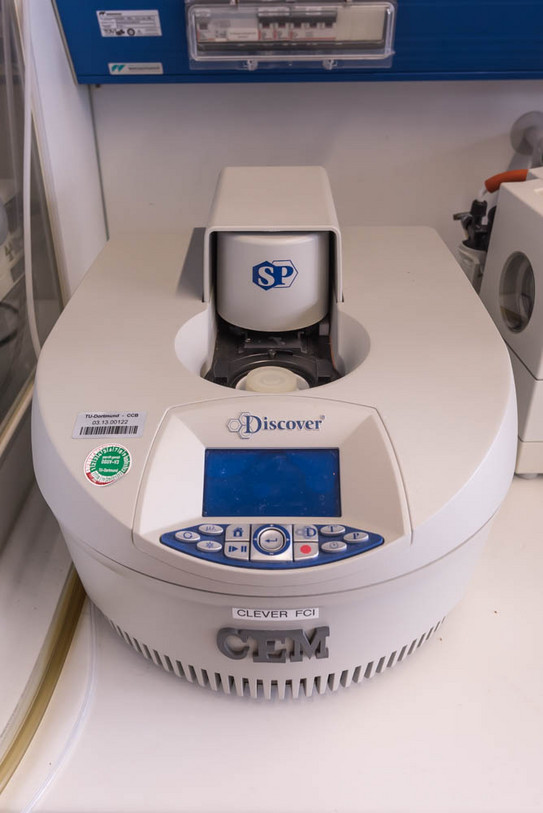
CEM Discover SP for heating reaction mixtures in open and closed vessels
3D-Printer
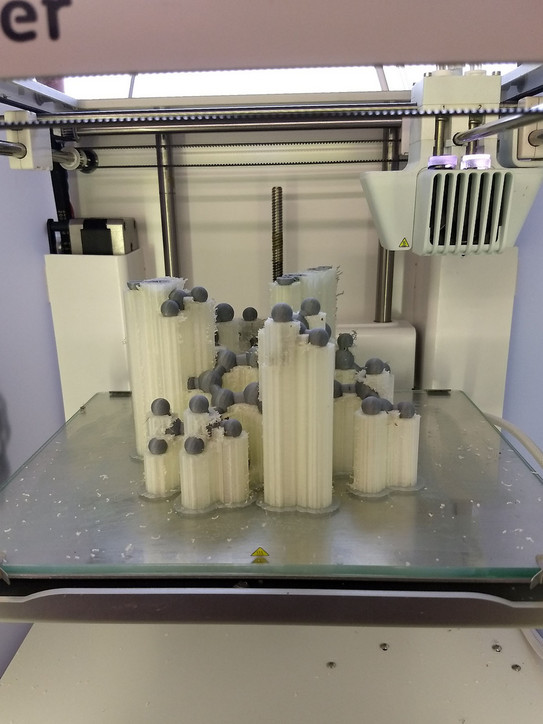
Filament Deposition Modeling (FDM) 3D Printer (Ultimaker 3) with two printing heads for simultaneous extrusion of durable PLA (poly lactide) plastic for printing molecular models and X-ray structures and water-dissolvable PVA (poly vinyl alcohol) support meant to keep the PLA in place during printing.
DNA Synthesizer
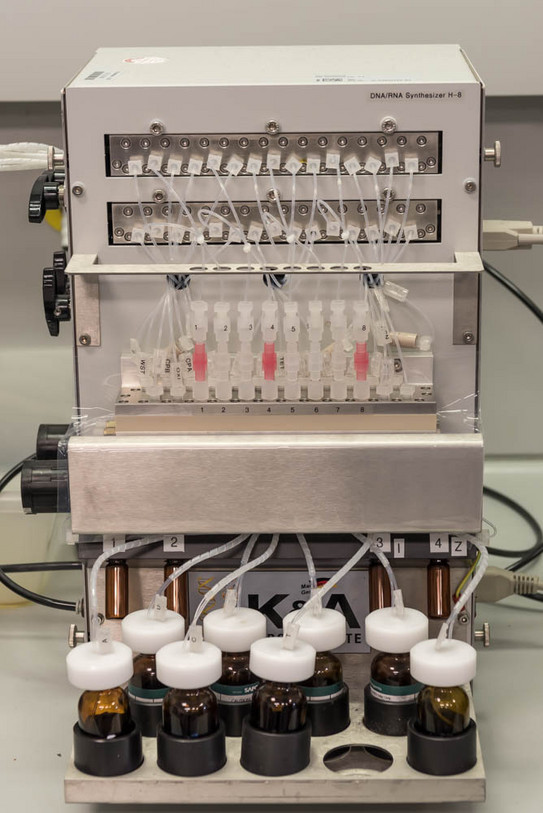
K&A Laborgeraete H-8 for the simultaneous preparation of up to eight oligonucleotide strands by phosphoramidite solid phase synthesis.
Gel Documentation
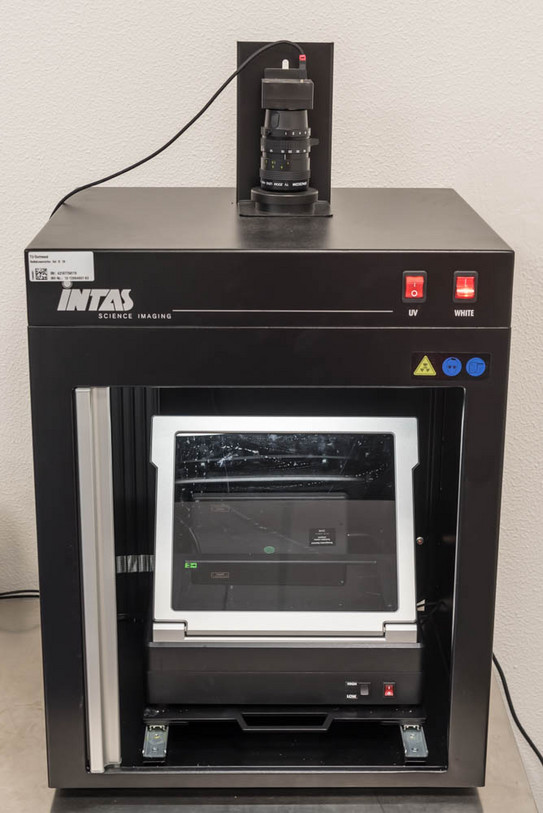
Gel Documentation system (Intas Gel IX 20).
Vacuum centrifuges
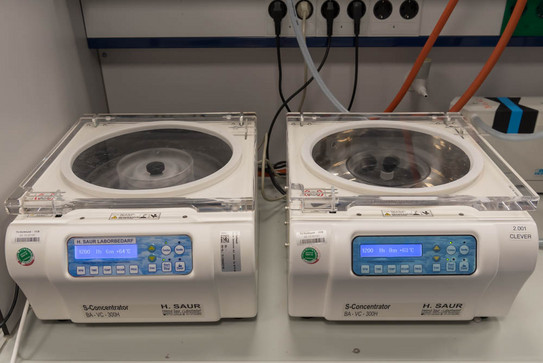
Two vacuum centrifuges (H.Saur S-Concentrator BA-VC-300H)
Nanodrop
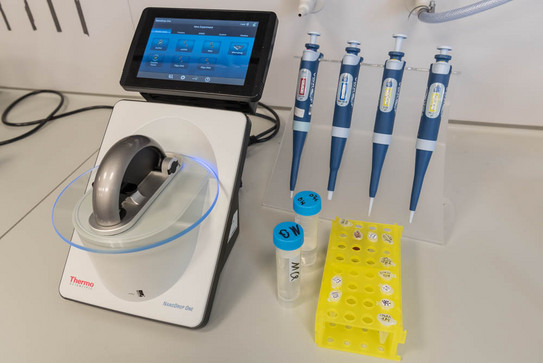
Thermo Scientific Nanodrop One for elucidation of DNA concentration.
Glassware washer
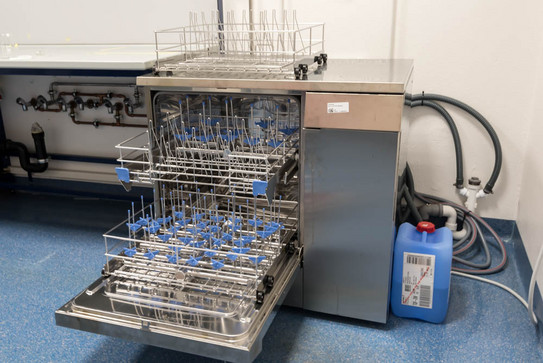
Lab glassware washer (Steelco lab 500 DRS)
Irradiation equipment
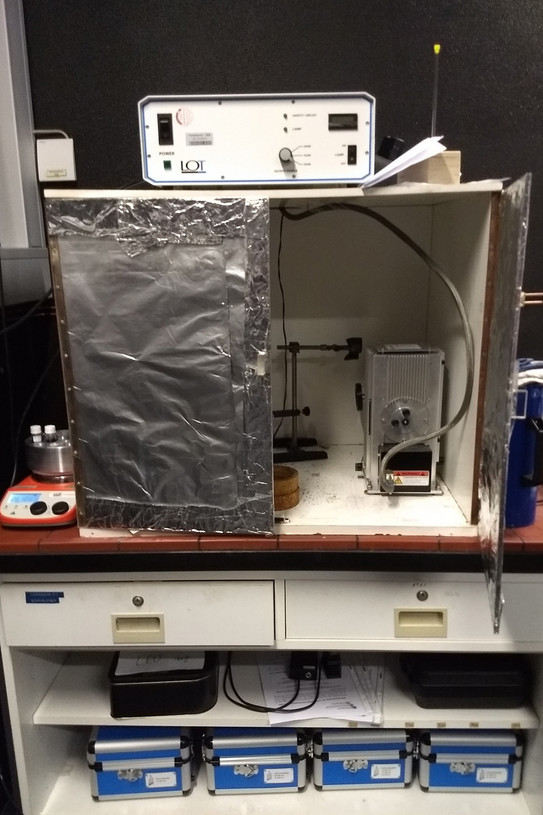
For photochemical conversions, consisting of a 500 W Hg lamp, different filters and power LED modules
Polarization microscope
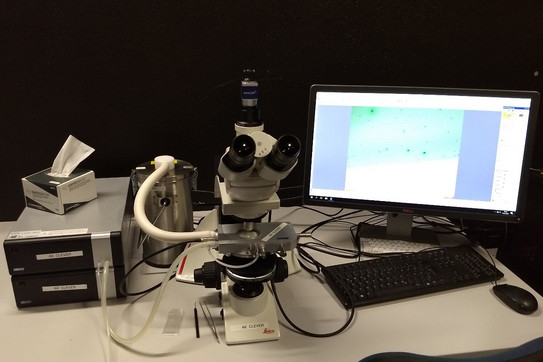
Leica DM2500LED polarization microscope including camera and Linkam LTSE420 temperature stage for material characterization
Workstations
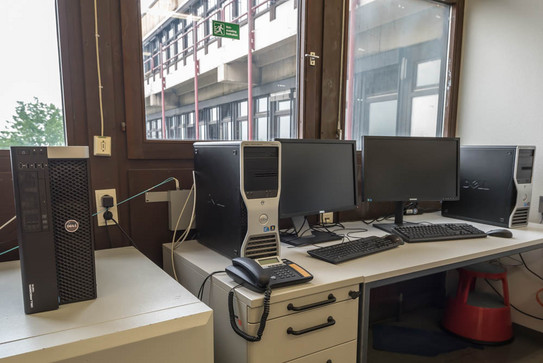
Several Xeon multiprocessor workstations for DFT calculations and MD simulations

